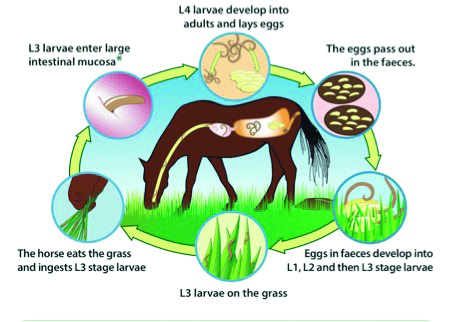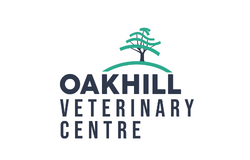Can we fight resistance? Responsible equine worming.
The approach to worming of the general horse population has changed significantly over the years. Unfortunately there are no new worming products in the pipeline and resistance to the current wormers is becoming more and more of an issue.
Testing to identify those horses (approximately 30%) that carry a worm burden significant enough to warrant worming is taking over from the ‘blind worming’ approach that we have previously taken.
In this ‘test before you treat’ approach, the positive tested horses then need to be wormed with the correct product, dependent upon the time of year. Ensuring you are administering the correct dose for the horse’s weight is really important as well because underdosing contributes to resistance.
The basic life cycle of an equine roundworm is shown in the picture below.

Stage 1: Eggs shed onto pasture develop, under the right conditions, into larvae.
Stage 2: Larvae are then eaten by the horse on grass where they enter the large intestine. These larvae mature to produce eggs.
Stage 3: Eggs are passed out in faeces, back to Stage 1.
Our new Equine Worm Control Plan is now available!
This year’s Oakhill Worm Control Plan is a bit different from previous years to avoid over-worming. It consists of an Equest wormer, 3 faecal egg counts spread over the year and a tapeworm saliva test kit.
If any of the tests come back positive, the appropriate wormer will be sent out for no extra charge, including the tapeworm-only praziquantel wormer that is no longer available from shops/online.
Click here for further information about the Oakhill Worm Control Plan.
